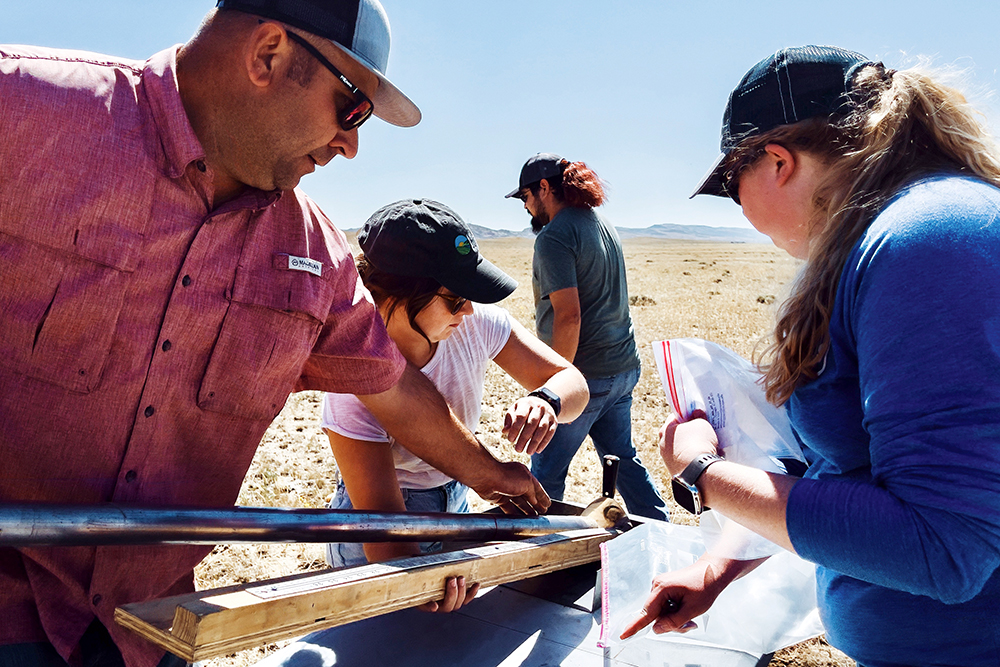Photography Tips for Elevating Your Brand
Today's smartphone cameras have come a long way. Here are some tips for how to best use yours to tell your ranch's story.
Human brains are optimized for visual information. We are capable of seeing and understanding six to 12 images in the same amount of time it takes to read and register one word of text. Well-made photographs can multiply the impact of words and brands by informing and enlightening viewers through an emotional response.
Roughly 94% of the 1.9 trillion photos from 2024 were made with a smartphone. It’s forecast that these devices will be used to make another 2.1 trillion in 2025. That’s a lot of pictures, and the number is only going to get bigger, so it’s more important now than ever to produce images that stand out.
Here are a few technical tips and tricks that will immediately make your smartphone photographs better:
- Clean your lenses with either a microfiber cloth or a 100% cotton shirt that is free of dust and sweat. Fabrics like polyester, fleece, rayon, silk, nylon and blends tend to smear grease and can even add to it.
- Make sure the brightness of your phone screen is turned all the way up, so you know what you’re seeing is what you’re getting.
- Do not zoom with the pinch-zoom function, which is a digital zoom and leaves images soft, pixelated and generally not high quality. Zoom only with your feet when you can (get closer to your subject).
- Turn off the flash unless absolutely necessary, as it tends to produce red-eye and is otherwise unflattering. If you are making horizontal pictures and it becomes essential to use the flash, consider turning your camera so the flash is above the lens.
- Consider using the Portrait mode for photographs of groups or individuals. You have to be close enough – 6 to 8 feet – for this function to work, but the results are usually really nice. If you end up disliking the blurring effect this mode creates, it can be reduced or eliminated in your phone’s photo-editing app.
- When using your iPhone camera, a single tap on the screen will produce a yellow box that you can use to adjust exposure (light) and focus on the point where you tapped. Drag your finger up or down to adjust the exposure of the picture.
- Tap and hold on the iPhone camera screen to produce a yellow box with the words “AE/AF LOCK” (auto exposure/auto focus) at the top of the screen. Not only will this adjust light and focus on the spot you tapped, but it will also stay there for you to shoot until you tap the screen again.
- If you have enough free space in your phone, turn on the “RAW” option in camera settings. Each photo takes up a bit more storage, but this format retains more data in each photo and gives you more detail in brighter brights and darker shadows.

The Human Element
We can program cameras to read and measure light, focus on faces and automate everything. But we can’t teach any camera how to see, think, feel or interpret what we see. And we certainly can’t program them to connect with our viewers for us.
That’s when photo composition — how we line things up in the frame — comes into play. I rely on these three elements when it comes to making a great photo: light, moment and composition. Here’s how to nail them.
- Light: Smartphones make balancing light easier, but even auto settings can’t save a photo shot into the sun. Be sure to keep the light source in front of, above or on the side of your subject, rather than behind it.
- Moment: Telling a story through an image is about capturing the right moment. People don’t relate until they see themselves, so we’re best served by making pictures that reflect honest moments. Rather than staging a photo, look for candid scenes that reflect the subject’s personality. Watch how people interact with others and move in space, try to predict the moment, and don’t be afraid to get close or shoot from a new, lower or higher angle.
- Composition: This one is a complex dynamic that varies in the eyes of visual storytellers. Knowing which composition to use and when to use it will become clearer with practice. Below is a truncated list of compositional guidelines you may find useful when making photos:
- Isolate Subject: Use light, color, angle and selective focus to help a subject stand out from its surroundings. This could include using foreground or background elements, lines or peripheral objects to help your subject stand out.
- Layers: Be mindful of what is in your fore-, middle and background.
- Rule of Thirds: Avoid placing your subject in the middle of your screen. Instead, mentally divide your screen – vertically and horizontally – into thirds and place your subject at intersecting lines.
- Space: Give your landscape or subject room to “breathe” visually, and beware of getting so locked into your subject that you forget to consider visual context that can add so much to the story your photo tells.



Comment